-
Experts call for a new organization to oversee grid’s cybersecurity
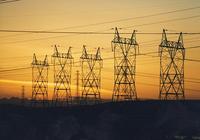
In 2013, U.S. critical infrastructure companies reported about 260 cyberattacks on their facilities to the federal government. Of these attacks, 59 percent occurred in the energy sector. A new report proposes that energy companies should create an industry-led organization to deflect cyber threats to the electric grid. Modeled after the nuclear industry’s Institute of Nuclear Power Operations, the proposed organization, to be called the Institute for Electric Grid Cybersecurity, would oversee all the energy industry players that could compromise the electric grid if they came under a cyberattack.
-
-
Large offshore wind farms could weaken hurricanes before they make landfall
Computer simulations have shown that offshore wind farms with thousands of wind turbines could have sapped the power of three real-life hurricanes, significantly decreasing their winds and accompanying storm surge, and possibly preventing billions of dollars in damages. For example, an array of 78,000 wind turbines off the coast of New Orleans would have significantly weakened Hurricane Katrina well before it made landfall, reducing wind speeds between 80 and 98 mph, and decreasing the storm surge by up to 79 percent.
-
-
Advancing algae’s viability as a biofuel
Lab success does not always translate to real-world success. A team of scientists, however, has invented a new technology that increases the odds of helping algae-based biofuels cross that gap and come closer to reality. The current issue of Algal Research showcases the team’s invention — the environmental photobioreactor. The ePBR system is the world’s first standard algae growing platform, one that simulates dynamic natural environments.
-
-
Not much is known about long-term health effects of chemical leaked in W.Va.
In January, 10,000 gallons an obscure chemical called 4-methylcyclohexanemethanol, or MCHM, used in processing coal, leaked from storage tanks into the nearby Elk River in the Charleston, West Virginia area, contaminating the water of more than 300,000 residents for days. To what degree MCHM affects long-term human and fetal health is a major concern for residents because of the lack of complete toxicology and other studies on the chemical.
-
-
U.K. could generate half its energy needs from currently underutilized bioenergy sources
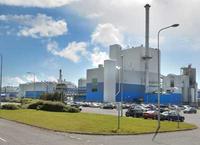
The United Kingdom could generate almost half its energy needs from biomass sources, including household waste, agricultural residues, and home-grown biofuels by 2050, new research suggests. Scientists found that the United Kingdom could produce up to 44 percent of its energy by these means without the need to import. The new study highlighted the U.K. potential abundance of biomass resources that are currently underutilized and totally overlooked by the bioenergy sector.
-
-
50-state roadmap to renewable energy unveiled
Researchers recently developed detailed plans to transform the energy infrastructure of New York, California, and Washington states from fossil fuels to 100 percent renewable resources by 2050. The new roadmap to renewable energy for all fifty states was presented on 15 February at the annual meeting of the American Association for the Advancement of Science (AAAS) in Chicago. The online interactive roadmap is tailored to maximize the resource potential of each state.
-
-
Iran-Russia oil deal threatens nuclear negotiations
Iran said that in exchange for Iranian oil, Russia could build a second reactor at Iran’s Bushehr nuclear power plant. Russia could also provide Iran with trucks, railroad tracks, mini-refineries, grain, and other goods for Iranian oil. In a deal worth $1.5 billion a month, Iran would export 500,000 barrels of oil per day to Russia. The deal would increase Iran’s oil exports, which have been reduced to about one million barrels a day by American and European sanctions aimed at curbing Iran’s nuclear program.
-
-
Power cuts will be more common in the future
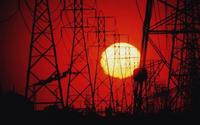
U.S. figures show that since 2007, commercial and domestic air-conditioning alone consumed 484billion kilowatt hours of electricity — not much more than the country’s total energy consumption in the mid-1950s. The American Society of Civil Engineers (ASCE) has warned that U.S. generation systems could collapse by 2020 without $100 billion of new investment in power stations. Demands of high-powered electrical appliances, a growing world population, and inadequate investment in the power sector will create more frequent power blackouts in Western societies.
-
-
Micro-windmills to recharge cell phones, used for home energy generation
Researchers have designed a micro-windmill that generates wind energy and may become an innovative solution to cell phone batteries constantly in need of recharging, and home energy generation where large windmills are not preferred. The device is about 1.8 mm at its widest point. A single grain of rice could hold about ten of these tiny windmills. Hundreds of the windmills could be embedded in a sleeve for a cell phone.
-
-
Promising geothermal resources found on Akutan Island, Alaska
Akutan Island, in Alaska’s east-central Aleutian Islands, hosts the City of Akutan and is home to the largest seafood production facility in North America. It also hosts Akutan Volcano, one of the most active volcanoes in the United States. During July 2012 the geochemistry of the hot springs on Akutan Island was studied in detail for the first time since the early 1980s. The results from this study document higher concentrations of hydrothermal components in the hot spring waters and an increase in water discharge from the hot spring system. The current heat output of the hot spring system is estimated at twenty-nine megawatts — nearly ten times higher than measured in the early 1980s. This large increase may reflect the volcanic and seismic events of the 1990s, and if so, it cannot be considered a short-term anomaly. Modern geothermal plants could use this heat to generate several MW of electricity. One MW of electric power would supply the needs of about 750 homes.
-
-
Natural gas leaks a significant source of green-house gas methane

Methane, a key greenhouse gas, has more than doubled in volume in Earth’s atmosphere since 1750. Its increase is believed to be a leading contributor to climate change. Where is the methane coming from, however? Research by atmospheric chemist Paul Wennberg of the California Institute of Technology (Caltech) suggests that losses of natural gas – regarded as the “cleanest” fossil fuel — into the atmosphere may be a larger source than previously recognized.
-
-
NSF rapid response research grants to fund study of West Virginia chemical spill
On 9 January 2014, crude 4-methylcyclohexane methanol (MCHM), a chemical primarily used to clean coal, leaked from a storage tank near Charleston, West Virginia, and bled into a river upstream of a water-treatment plant. As a result, about 15 percent of the state’s residents were advised not to drink the water. Better to understand the properties of the chemical that contaminated the drinking water, and the plumbing and water-treatment systems surrounding the area, the National Science Foundation (NSF) has awarded Rapid Response Research (RAPID) grants to research teams at three universities. These grants also will provide STEM learning opportunities for undergraduate and graduate students on the research teams.
-
-
New biofuel sources does not require farmland

While the debate over using crops for fuel continues, scientists are now reporting a new, fast approach to develop biofuel in a way that does not require removing valuable farmland from the food production chain. Their work examines the fuel-producing potential of Streptomyces, a soil bacterium known for making antibiotics.
-
-
The world likely to face more frequent, and more severe, blackouts
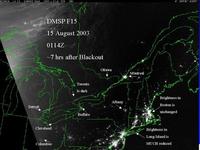
U.S. household electricity usage increased by 1,300 percent between 1940 and 2001. In the last few decades, air conditioning has been the greatest factor in increased electrical consumption, and one of the greatest sources of systematic strain, with considerably more blackouts occurring in the summer months than during winter. The electricity used to fuel America’s air conditioning is currently of a similar volume to the U.S. entire energy consumption in the 1950s. A new study reveals that today’s occasional blackouts are dress rehearsals for the future, when they will occur with greater frequency and increased severity. Power cuts will become more regular around the globe as electrical supply becomes increasingly vulnerable and demand for technology continues to grow at an unprecedented rate.
-
-
Deepwater Horizon: Identifying harmful elements of persisting oil
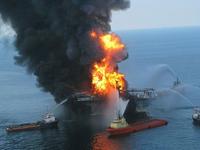
Scientists are unraveling the composition of persisting oil residues collected from Gulf of Mexico beaches following the Deepwater Horizon disaster, insisting on further assessment of the toxic impact of these chemical remnants on the marine ecosystem. A new study targeted the most abundant compounds in the residual oil, dissecting their composition with unprecedented accuracy. This is important for understanding the environmental impact of persisting oil remnants, because ecotoxicologists have demonstrated that all three chemical groups can be harmful to living organisms. More worrisome, relatively little is known about the broader toxicity of saturates and oxygenated hydrocarbons in the marine ecosystem, like the Gulf of Mexico —where there are 223 offshore oil rigs — even though these compounds constitute most of the persisting oil.
-
More headlines
The long view
Trump Is Fast-Tracking New Coal Mines — Even When They Don’t Make Economic Sense
By Katie Myers
In Appalachian Tennessee, mines shut down and couldn’t pay their debts. Now a new one is opening under the guise of an “energy emergency.”
Smaller Nuclear Reactors Spark Renewed Interest in a Once-Shunned Energy Source
By David Montgomery
In the past two years, half the states have taken action to promote nuclear power, from creating nuclear task forces to integrating nuclear into long-term energy plans.
